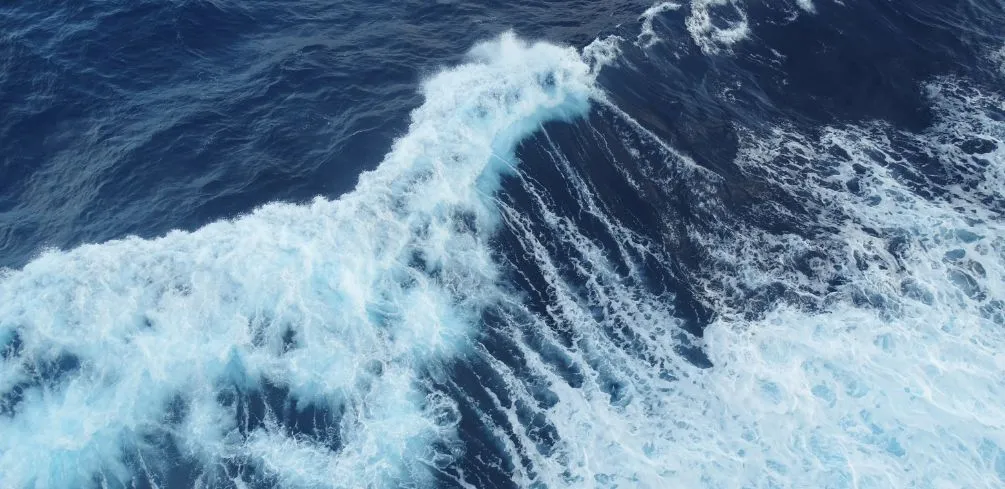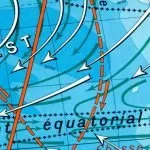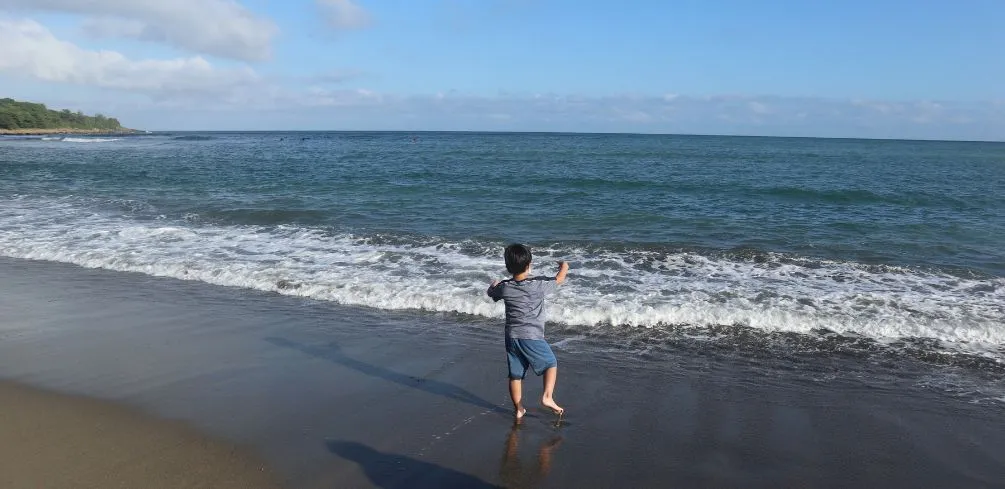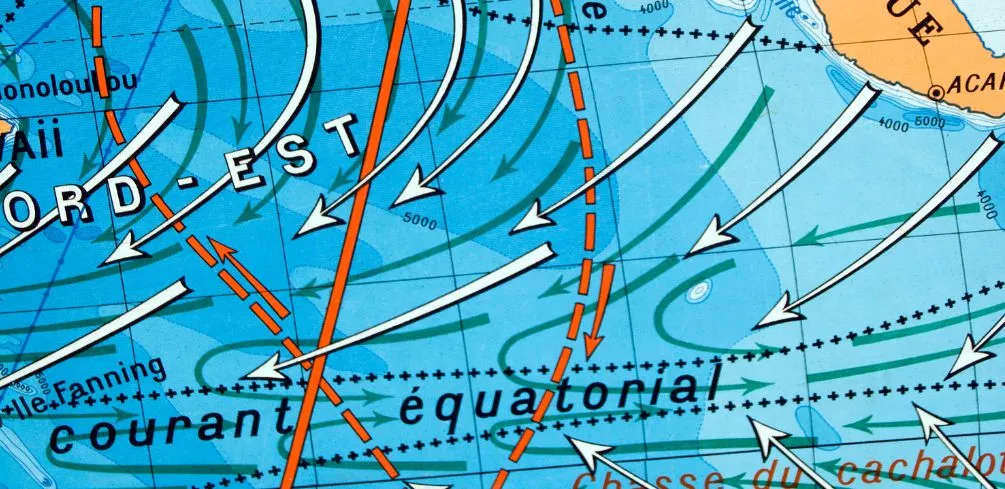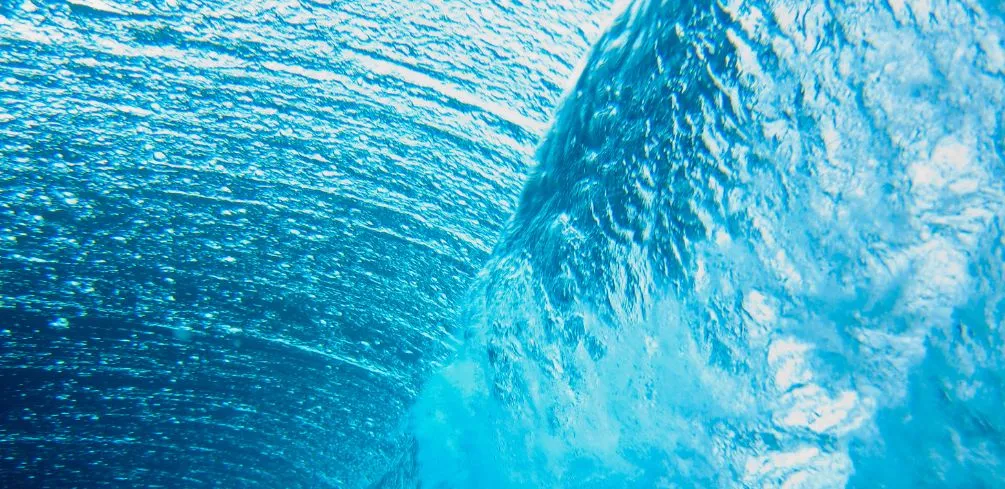The ocean is an immense, mysterious body of water that covers more than 70% of our planet’s surface. It is home to an ever-changing environment full of life and fascinating phenomena such as ocean currents.
These powerful movements of water can affect everything from climate change to the fishing industry, making them essential to understand. Let’s dive right in and explore the different types of ocean currents that shape our world!
Have you ever noticed how waves tend to move in a particular direction? This is due to the presence of ocean currents, which are large streams of water that flow throughout the world’s oceans. Ocean currents can be divided into two main categories: surface currents and deep-water currents.
Surface currents are driven by wind, while deep-water currents are created by differences in temperature and salinity. In either case, these powerful forces of nature have a huge impact on our planet!
We’ll explore the different types of ocean currents and how they interact with other aspects of the marine environment, such as temperature changes or nutrient cycles. We’ll also look at how these incredible forces influence weather patterns, marine life, and human activities like shipping and fishing. So strap on your scuba gear – we’re about to go on an underwater journey!
Causes Of Marine Circulation
The ocean is a vast and mysterious force that contains some of the most powerful and unpredictable currents in the world. It’s no wonder, then, that understanding the causes of marine circulation is essential for those who use its waters for transportation and commerce. There are several factors responsible for creating different types of ocean currents, including thermohaline circulation, wind-driven circulation, upwelling currents, river runoff, and tidal forces.
Thermohaline circulation or ‘global conveyor belt’ occurs when warm water from the surface evaporates and sinks to deeper levels in the ocean. This creates a flow of cold, dense water which then moves around the world in a huge loop known as the ‘great ocean conveyor belt.’ The movement is driven by differences in temperature and salinity between different regions of water found at different depths.
Wind-driven circulation also plays an important role in marine current formation. As the wind blows across the surface, it can push or drag on the surface layers of water, causing them to move in large circular patterns known as gyres.
Upwelling currents occur when cold water rises from deeper levels in order to replace warmer surface waters that have been pushed away by strong winds or tides. River runoff into coastal areas can also cause significant changes to local ocean conditions, including increased turbulence, acidity levels, temperatures, and salinity levels.
Finally, tidal forces created by the moon’s gravitational pull can cause large volumes of seawater to move around coasts creating both high tides and low tides, which result in the powerful ebbing and flowing currents along shorelines.
It’s clear that there are many complex forces at work beneath the waves, which result in a variety of different types of ocean currents around the world. Understanding these processes is essential for anyone looking to travel through these dangerous waters safely.
Characteristics Of Ocean Currents
Now that we’ve discussed the causes of marine circulation let’s dive into the characteristics of ocean currents. There are two types of ocean currents: warm water and cold water. Warm-water currents are generated by solar energy and flow toward the poles, while cold-water currents flow away from the poles toward the equator.
Wind-driven currents are also very common and are often found in coastal regions. These currents move in a clockwise rotation in the northern hemisphere and a counter-clockwise rotation in the southern hemisphere. As they move along, they bring warm or cold waters from one region to another, affecting nearby marine life and ecosystems.
Finally, oceanic gyres play an important role in global circulation as well. Gyres form when a series of circulating winds move around a system of rotating currents. This creates large, circular patterns in the ocean’s surface that can affect biological productivity, nutrient cycling, and even climate change on a global scale.
Classification Of Ocean Currents
Ocean currents can be classified into several different types. The first type is thermohaline circulation, which is driven by differences in temperature and salinity. This type of current is responsible for the global conveyor belt and plays an important role in climate patterns.
Another type of current is an eddies current, which occurs when two adjacent currents flow in opposite directions. These currents are often seen near the ocean’s surface and can cause turbulence, confusion, and sometimes hazardous conditions for ships.
A third type of current is a rip current, which typically forms along coastlines due to wave action or disturbances from storms or another water movement. Rip currents are dangerous and can pull unsuspecting swimmers out to sea with their strong currents.
Coastal currents are another type of ocean current; they move parallel to shorelines and generally move counter-clockwise along the eastern coasts of continents and clockwise along western coasts. Finally, gyres currents are large circular currents that form as part of major ocean systems like the Gulf Stream or Kuroshio Currents.
They occur when winds drive surface water away from the center while deeper waters remain still in order to balance out the rotating motion caused by the wind.
Ocean currents play an important role in our planet’s ecosystems and weather patterns, so understanding how they work is essential for understanding our world’s climate system as a whole. It’s clear that there are many different types of ocean currents, each with its own unique characteristics – all contributing to our planet’s dynamic environment!
Effects On The Marine Environment
It’s no coincidence that the world’s oceans have a huge influence on the marine ecosystem. Depending on their type, ocean currents have several effects on the environment, including coastal erosion, upwelling zones and water temperature.
The most powerful of all currents are warm ones, which can cause severe coastal erosion due to their high speed. They also increase the water temperature in certain areas, which can adversely affect species like coral reefs and other marine life that are sensitive to changes in temperature.
Cold currents, meanwhile, create upwelling zones where nutrients from the deep sea rise to the surface. This encourages phytoplankton growth and helps sustain a healthy marine ecosystem. Unfortunately, cold currents can also contribute to ocean acidification by bringing highly acidic water from deeper parts of the ocean closer to the surface.
Ocean currents play an important role in regulating our planet’s climate and maintaining a balanced marine environment. It is essential for us to understand how they interact with our ecosystems and how we can mitigate their negative impacts on future generations.
Human Impacts On Ocean Currents
Humans have had a major impact on ocean currents over the last few decades, resulting in numerous changes to their natural patterns. Our activities, such as marine pollution, climate change, and ocean warming, have caused a wide array of disturbances.
Here are some of the main ways that humans are impacting ocean currents:
Marine Pollution:
- Pollutants from ships and offshore drilling can disrupt currents by creating a physical barrier that prevents water from flowing normally.
- Chemicals like oil spills can also contaminate water and reduce its ability to absorb heat, leading to cooler temperatures that can affect the speed and direction of current flow.
- Nutrient runoff from agricultural land can harm aquatic life and destabilize currents by altering the chemical balance of the water.
Human Activities:
- Coastal development projects can block off or divert water from its natural path, leading to changes in current flow patterns.
- Fishing activities can disturb sediment layers that help maintain balance in current systems.
- Shipping vessels create waves that alter the movement of ocean currents.
Climate Change & Ocean Warming:
- Rising sea levels caused by global warming lead to an increase in coastal erosion, which can cause changes in current direction or strength.
- Warmer waters reduce the density of surface layers, which affects how quickly or slowly currents move through them. This has led to an increase in dead zones due to a lack of oxygen and nutrients being circulated throughout the oceans.
Overall, it’s clear how humans have had a dramatic effect on ocean currents with our various activities and climate change-related issues.
Without proper management, these effects could be devastating for marine ecosystems around the world and lead to further rises in sea levels that could threaten coastal communities and habitats alike. It’s imperative that we do all we can to protect our oceans before it’s too late!
Frequently Asked Questions
How Do Ocean Currents Affect Climate?
Imagine the ocean currents like a jigsaw puzzle, with each piece connecting to form a beautiful picture. Every element of this puzzle affects the other pieces, and it’s no different when it comes to the relationship between ocean currents and climate.
The ocean current climate is an important factor in weather patterns and temperatures around the world – in fact, climate changes can be linked directly to certain ocean current effects. For example, El Niño – an irregularly occurring warming of surface waters across the equatorial Pacific Ocean – is one of these effects, which can lead to extreme weather conditions being experienced in various parts of the world.
It’s not just El Niño that has an impact on global temperatures either; ocean current weather systems like eddies, gyres, and upwellings are also capable of influencing regions significantly. By understanding how these currents interact with each other and how they affect areas far away from their source, we can gain insight into how climate change might continue to play out in the future.
Ocean currents will remain integral components of our planet’s ecosystem for many years to come; they shape global temperatures, influence weather patterns and affect local ecosystems all over the world. Understanding their complexities is key if we are to mitigate against potential risks posed by climate change and ensure future generations have access to safe living environments.
What Is The Most Powerful Ocean Current?
Have you ever wondered what the most powerful ocean current is? Ocean currents have a huge impact on climate and weather, so it’s important to know which ones are the strongest.
There are some contenders for the title of most powerful ocean current, such as ocean gyres, Gulf Stream Current, Antarctic Circumpolar Current, and North Atlantic Drift.
Ocean gyres are large systems of rotating ocean currents created by wind patterns, global winds, and the Coriolis effect. They act like conveyor belts, circulating warm or cold water depending on where they are located.
This can affect the climate in that region by bringing warmer water to colder regions and vice versa. The Gulf Stream Current is an example of an ocean gyre flowing from Mexico up to Europe along the east coast of North America.
The Antarctic Circumpolar Current is considered one of the strongest ocean currents in the world due to its size and speed. It connects all three major oceans – Pacific, Indian, and Atlantic – while flowing around Antarctica in a clockwise direction. It carries vast amounts of cold water from Antarctica across the globe and helps regulate temperatures near the poles by preventing them from becoming too extreme.
The North Atlantic Drift is another contender for the most powerful ocean current. It follows a route similar to that of the Gulf Stream Current but instead moves northward towards Norway before eventually reaching Greenland. This current brings warm waters from lower latitudes up into northern Europe, which helps keep temperatures relatively mild compared to other regions at similar latitudes.
In terms of strength, all four contenders provide strong evidence for why they should be considered some of the most powerful ocean currents on earth. Each one plays an essential role in regulating global climates while transporting heat energy around our planet’s oceans – making them all worthy competitors for this title!
How Have Ocean Currents Changed Over Time?
Have you ever wondered how ocean currents have changed over time? In order to gain a better understanding of the ocean’s current trends, it is important to look at the historical changes and the impact of climate change on ocean flow patterns.
The movement of seawater is constantly changing due to a variety of factors, including melting glaciers, wind-driven circulation, and atmospheric pressure. Historically, many ocean currents have changed direction or intensity due to shifts in global temperatures. For example, the Gulf Stream has shifted northward over the last 150 years because of the warming climate.
To understand how ocean currents have been affected by climate change, we need to consider both short-term changes as well as long-term trends.
Here are three key aspects to keep in mind:
- Ocean temperature changes can alter circulation patterns which affect coastal ecosystems and marine life.
- Changes in salinity levels can cause fluctuations in oceanic circulation patterns leading to dramatic shifts in sea level rise and coastal erosion.
- Long-term trends can reveal larger scale modifications that could impact global weather systems and climates over time.
Ocean currents play an integral role in our planet’s ecosystems and understanding how they have changed over time will help us form strategies for mitigating potential impacts from future climate change. It is clear that we need to continue researching these important topics so that we can prepare for whatever comes our way!
How Do Ocean Currents Affect Marine Life?
Ocean currents have a huge impact on ocean life and the overall ecology of our planet. They affect marine species in both positive and negative ways, depending on the current patterns and their intensity. In this article, we will explore how ocean currents affect marine life and what role they play in ocean ecology.
First, let’s look at how ocean currents affect the movement of marine species. Currents can transport larvae and other organisms from one area to another, allowing them to colonize new habitats. This can be beneficial for some species as it increases their chance of survival and gives them access to new food sources.
On the other hand, stronger currents can be detrimental for certain organisms as they can carry them away from their preferred habitat or disrupt breeding patterns.
In addition to affecting individual species, ocean currents also influence entire populations of marine life by altering food webs within different regions. Currents bring nutrients from deep waters to shallow areas, providing vital sustenance for many species of fish and invertebrates that rely on plankton for food.
These nutrients are essential for maintaining healthy populations of fish, which in turn support larger predators like sharks, dolphins, and whales.
Ocean ecology is constantly being affected by current patterns in both subtle and dramatic ways. For example:
Climate Change:
- Warmer waters caused by climate change could lead to more frequent intense storms, which would have a devastating effect on coral reefs and other vulnerable ecosystems.
- Changes in salinity levels due to rising temperatures could also alter the range of certain species as well as the migration patterns of certain animals such as sea turtles or salmon.
Pollution:
- Pollutants such as oil spills or plastic waste can get swept up in ocean currents and transported over long distances leading to harmful effects on marine life in distant locations far away from where the pollution originated from.
- These pollutants can cause physical injury or even death if ingested by creatures living in affected areas while also disrupting food webs leading to further damage to local ecosystems over time.
There’s no denying that ocean currents play an important role in sustaining life beneath the waves but their effects are often unpredictable and wide-reaching, making it difficult for us humans to predict all the consequences of our actions on these delicate systems.
It’s our responsibility, then, to do whatever we can to protect these valuable resources so that we may continue enjoying all their wonders for generations yet unborn!
How Can Humans Help To Protect Ocean Currents?
As we all know, the ocean is powerful and vast, yet fragile. It’s hard to believe that something so big could be in danger of destruction by us humans. But unfortunately, it is.
Global warming has led to an increase in the temperature of ocean waters, which has significantly impacted the different types of ocean currents that keep our oceans healthy and functioning properly. So how can we help preserve, protect, and conserve these essential elements of our planet?
First off, it’s important to understand why ocean currents are so important. Not only do they transport heat around the world, but they also transport nutrients essential for marine life’s survival. Additionally, they help maintain a steady temperature across all of Earth’s oceans. In short, without them, our planet would be unrecognizable – talk about an anachronism!
We can start by raising awareness about ocean currents and their importance to our planet’s health. We can share informative articles or videos on social media platforms to educate others on this topic.
Additionally, we should challenge ourselves to make small changes in our daily lives that have a positive impact on the environment such as reducing plastic consumption or using less gasoline for transportation purposes. Lastly, we should support organizations that are actively working towards preserving and protecting our oceans from further damage caused by global warming, like Greenpeace or Oceana.
Our actions today will determine what kind of world we leave behind for future generations, so let’s come together and take action now before it’s too late! Let’s give back what was given to us: a healthy and thriving planet with strong ocean currents keeping it alive and vibrant!
Conclusion
The ocean currents are an integral part of our planet’s climate, and it is important for us to protect them. Although some of the strongest ocean currents have remained fairly consistent over time, we are still seeing changes in current patterns due to global warming. These changes could potentially have devastating effects on marine life and ecosystems if nothing is done to preserve them.
We can all contribute to preserving ocean currents by educating ourselves and others about their importance, reducing our dependence on non-renewable resources, and advocating for policies that support sustainable practices. By doing our part now, we can ensure that future generations will be able to enjoy the beauty and bounty of the oceans.
In conclusion, it is easy to take for granted the powerful forces of nature that shape our world – but when we understand how interconnected all living things are, it becomes clear why protecting ocean currents is so important. Let us use this knowledge to inspire action that safeguards these essential elements for generations to come! After all, without them, we may not be here tomorrow – so let us act today with passion and conviction!
